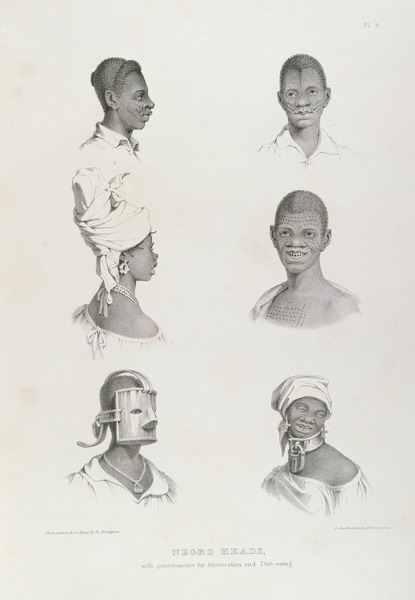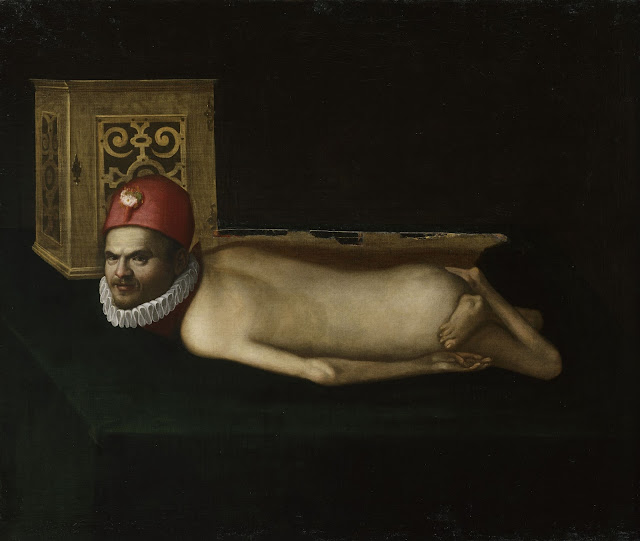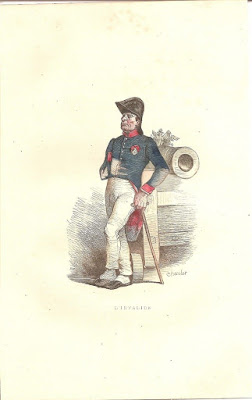Apasmaaram and the Academic Pursuit of Disabled Pasts
By Aparna Nair
As Douglas Baynton pointed out, once you begin to ‘see’ disability, it is everywhere.1 I never had to look too far. I do not possess particularlly lucid memories of my childhood. What I do remember is my childhood was punctuated and subsequently disjointed by the ebb and flow of epilepsy (‘apasmaaram’ in my language, Malayalam); as is often typical for the ‘unhealthily disabled’.2 At the age of 11, I had my first, dramatic seizure. I don't recall much about the event, just brief flashes of pain, panic and confusion. Over the next seven years, I only had ten or so seizures and my epilepsy eventually responded to a cocktail of medications. While cushioned from the economic stresses of living with a chronic illness in India by the protections and privileges afforded to an ‘upper-caste’, middle-class family, epilepsy nonetheless proved to be quite cataclysmic.
I remember people kept telling me I should have been grateful; grateful that I was only occasionally sick, grateful that ‘it’ could be treated. But I spent most of my adolescence terrified of the silent beast that seemed to sleep in my brain. A beast that was woken from its fitful slumber when I was tired, anxious, hungry or sleep-deprived.
Epilepsy had also marked me as irrevocably different. For me, and indeed for my family, epilepsy had been neither an ‘appropriate difference’ nor, as Friedner recently argued, perceived as ‘non-threatening, ‘feel-good’ diversity in India.3 Epilepsy had marked and fixed me as the ‘sick girl’ through my adolescence, one whose corporeal non-normativity was clear, but little understood and often conflated with mental illness. As a result, I spent many decades struggling to conceal my epilepsy, driven by a powerful desire for social normativity. Yet my identity and selfhood were irrevocably shaped by epilepsy.
Along the way, I have confronted questions about whether I am able to remain ‘objective’ in my work. Certainly, my ‘epileptic’ subjectivity seeps into many aspects of my research—in epistemology and ontology. In terms of epistemology, epilepsy has made me a far more self-reflexive historian than I could ever have been. I find myself constantly anxious about and reflecting on my position, my biases and my experiences and also attempting to negotiate ways to limit their impacts on my research. I must admit that I struggle to maintain a distance between myself and my subjects—to whatever extent that was possible. Indeed, it should be acknowledged that there is an affective toll for disabled historians engaging with disabled subjects.
__________________
1 Douglas C. Baynton, ‘Disability and the Justification of Inequality in American History’, in Paul K. Longmore and Lauri Umansky, eds. The New Disability History, New York: New York University Press, 2001.↩
2 Susan Wendell, ‘Unhealthily Disabled: Treating Chronic Illnesses as Disabilities’, Hypatia, 16,4(Fall 2001): 17-33.↩
3 Michele Friedner, ‘How the disabled body unites the national body: Disability as ‘feel good’ diversity’, Contemporary South Asia, (September 2017): 1-17.↩
4 Aparna Nair, ‘They Shall See His Face: Blindness in British India, 1850-1950’, Medical History, (April 2017)↩
5 Ellen Dwyer, ‘Stories of Epilepsy, 1880-1930’, in Charles E Rosenberg and Janet Lynne Golden, eds. Framing Disease: Studies in Cultural History, New Brunswick, NJ: Rutgers University Press, 1997, 248-75.↩
6 Sanjeev V. Thomas and Aparna Nair, ‘Confronting the Stigma of Epilepsy’, Annals of the Indian Academy of Neurology, 14,3(Jul-September 2011): 158-163.↩
7 Susan Sontag, Illness as Metaphor, New York: Vintage Books, 1979.↩
As Douglas Baynton pointed out, once you begin to ‘see’ disability, it is everywhere.1 I never had to look too far. I do not possess particularlly lucid memories of my childhood. What I do remember is my childhood was punctuated and subsequently disjointed by the ebb and flow of epilepsy (‘apasmaaram’ in my language, Malayalam); as is often typical for the ‘unhealthily disabled’.2 At the age of 11, I had my first, dramatic seizure. I don't recall much about the event, just brief flashes of pain, panic and confusion. Over the next seven years, I only had ten or so seizures and my epilepsy eventually responded to a cocktail of medications. While cushioned from the economic stresses of living with a chronic illness in India by the protections and privileges afforded to an ‘upper-caste’, middle-class family, epilepsy nonetheless proved to be quite cataclysmic.
I remember people kept telling me I should have been grateful; grateful that I was only occasionally sick, grateful that ‘it’ could be treated. But I spent most of my adolescence terrified of the silent beast that seemed to sleep in my brain. A beast that was woken from its fitful slumber when I was tired, anxious, hungry or sleep-deprived.
 |
| Source: Wellcome Trust, A kuttar or line of blind beggars in Kabul, 19th century |
Epilepsy also pushed me to center the disabled subject in my scholarship. Although I came to disability studies rather late (I was initially trained as a historian of medicine and public health), when I began reading widely in the field, I experienced an almost giddying and immediate sense of relief. Disability studies offered me both exegesis and catharsis and taught me to stop apologising for and explaining my illness. Disability theory gave me the words and the concepts to understand and process my embodied experiences. Disability activism reinforced the value of representation, especially within academia. And encouraged me to step ‘out of the closet’.
In 2009, I returned to the epilepsy clinic where I was diagnosed. I returned in a different role, however, as an academic seeking to understand the social experience of this common neurological illness. I also began exploring the disabled subject in my historical scholarship. Today, my work explores the colonial histories of disability or ‘infirmity’ in British India through biomedicine, the census, the army, everyday colonial technologies of disability and missionary schools.4 I explore blindness, deafness and war disabilities in my scholarship. My ethnographic work explores the construction of self and personhood in the wake of a diagnosis of epilepsy and the ways in which epilepsy was understood as an undesirable difference in South India.
 |
| The Records Room of the Tamil Nadu State Archives, Chennai. Source: The Hindu, grjgm |
Along the way, I have confronted questions about whether I am able to remain ‘objective’ in my work. Certainly, my ‘epileptic’ subjectivity seeps into many aspects of my research—in epistemology and ontology. In terms of epistemology, epilepsy has made me a far more self-reflexive historian than I could ever have been. I find myself constantly anxious about and reflecting on my position, my biases and my experiences and also attempting to negotiate ways to limit their impacts on my research. I must admit that I struggle to maintain a distance between myself and my subjects—to whatever extent that was possible. Indeed, it should be acknowledged that there is an affective toll for disabled historians engaging with disabled subjects.
When I read of the lives of epileptic historical subjects—institutionalised, sometimes lobotomised and certainly considered ‘undesirable’—I am uneasy.5 Similar responses arose when I read of the Hindu Marriage Act in India which had for centuries permitted marriages to be annulled if one party was subject to ‘repeated attacks of insanity or epilepsy’.6 When I listen to my subjects in the epilepsy clinic tell me about their anxieties and struggles with belonging, education, family and marriage, I am uncomfortably aware of the parallels in my own life. For some disabled scholars, the act of recovering the disabled pasts can be painful. The processes and results of our research could potentially revive and reinforce any past stigmatisation. Yet, I would argue that there is a unique joy, grace and power in recovering and rehabilitating the silent and silenced voices of disabled historical subjects through our teaching and research.
There are other more immediate and perhaps more banal ways in which epilepsy influences my scholarship. Most notably, the somatic constraints imposed by epilepsy do limit the possibilities of research. Both ethnographic and historical research can often prove strenuous and draining for anyone with a chronic illness. Long hours spent in archives amid flickering tube-lights are often physically exhausting and triggered auras. A day spent poring over records at the archives routinely leaves me enervated; I frequently have to take time off from my schedule to accommodate my physical constraints. Ethnographic research in the hospital setting has much the same effect, and in fact it did result in a seizure in 2011; when I nearly fell out of an autorickshaw into rush-hour traffic as my unconscious body convulsed in a seizure. Again, it is disability studies that gave me the abilities and frameworks to process relapses and returns to the ‘kingdom of the sick’.7 I also have come to accept that I had to listen to my body, and that while my illness could translate into vulnerability and corporeal precarity, it proffered me an epistemological egress and ontological advantages.
When I was asked to write this blogpost, I must admit I hesitated somewhat. Academics—historians in particular—are rarely trained or encouraged to center themselves in their scholarship. When we do so, we are suspected of navel-gazing and narcissism at best, and poor historical practice at worst. Yet, postmodern and postcolonial critiques of history and anthropology urge the researcher to continuously and consistently question their own gaze, biases and perceptions. As a disabled historian and a disabled anthropologist, certainly, I would argue that self-reflexivity is both useful and necessary. Contrary to critiques, self-reflexivity can be both intellectually rigorous and personally rewarding.
1 Douglas C. Baynton, ‘Disability and the Justification of Inequality in American History’, in Paul K. Longmore and Lauri Umansky, eds. The New Disability History, New York: New York University Press, 2001.↩
2 Susan Wendell, ‘Unhealthily Disabled: Treating Chronic Illnesses as Disabilities’, Hypatia, 16,4(Fall 2001): 17-33.↩
3 Michele Friedner, ‘How the disabled body unites the national body: Disability as ‘feel good’ diversity’, Contemporary South Asia, (September 2017): 1-17.↩
4 Aparna Nair, ‘They Shall See His Face: Blindness in British India, 1850-1950’, Medical History, (April 2017)↩
5 Ellen Dwyer, ‘Stories of Epilepsy, 1880-1930’, in Charles E Rosenberg and Janet Lynne Golden, eds. Framing Disease: Studies in Cultural History, New Brunswick, NJ: Rutgers University Press, 1997, 248-75.↩
6 Sanjeev V. Thomas and Aparna Nair, ‘Confronting the Stigma of Epilepsy’, Annals of the Indian Academy of Neurology, 14,3(Jul-September 2011): 158-163.↩
7 Susan Sontag, Illness as Metaphor, New York: Vintage Books, 1979.↩
Recommended Citation:
Aparna Nair (2017): Apasmaaram and the Academic Pursuit of Disabled Pasts. In: Public Disability History 2 (2017) 16.
Aparna Nair (2017): Apasmaaram and the Academic Pursuit of Disabled Pasts. In: Public Disability History 2 (2017) 16.


